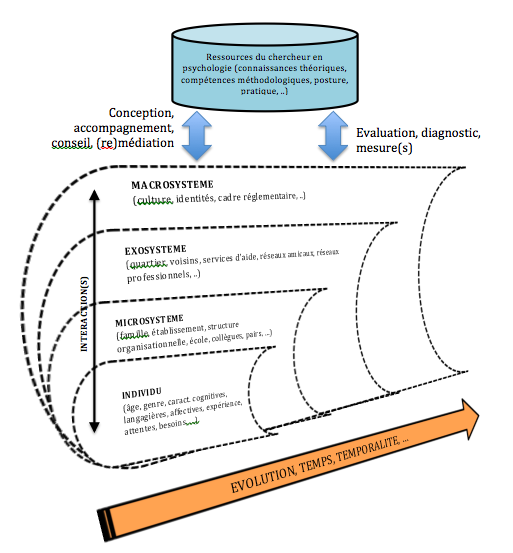From the point of view of fundamental and theoretical research, the studies conducted within the 2LPN Unit (EA 7489) aim to study and model behavioral dynamics in the light of the profound changes currently facing society (demographic, societal-cultural, technological, professional, institutional). If the approach centered on psychological and neuroscientific dimensions seems to us to be particularly relevant for better understanding interactions in the case of so-called “all-round” individuals (users, learners, consumers, professionals, etc.), it seems to us to be of prime importance for better understanding and, in fine, helping particularly vulnerable publics (e.g., with disabilities) or with specific needs due to individual characteristics (e.g., young children, aging people) or context (e.g., evaluation and impact of affective states resulting from a stressful situation on motor performance, behavior and cognitive processes in an extreme environment).
From the point of view of applied research, the studies carried out within 2LPN contribute to reflections on the practices of psychologists and neuropsychologists, and enable the evaluation and design of innovative systems linked to health, professional activity, and education.

The work of 2LPN (EA 7489) focuses on the complex interrelationships that arise, develop (in space), and unfold (in time) between environmental and individual factors. Researchers converge from a paradigmatic point of view, apprehending human behavior, conduct, and activities within this dynamic system, where development is to be understood and declined in the sense of change which, beyond provisional stability, can take the form of an evolutionary or involutive trajectory inscribed within a temporality. Rather than a classical (linear) causal determinism, behavior, conduct, and activities are understood in terms of the processes that govern them. From this perspective, the work carried out by 2LPN is based on the view that the dynamics of a situation cannot be reduced to environmental parameters and/or the characteristics of the entities at stake (individuals, groups, organizations), but that they are born of the interactions that make the dynamics possible and bring them about. This dynamic unfolds at the level of the individual and the systems in which he or she is immersed.
The different axes of 2LPN complement each other perfectly since the work carried out there concerns distinct but continuous temporal scales (See: Newell, A. (1990). Unified Theories of Cognition. Cambridge, MA: Harvard University Press).
